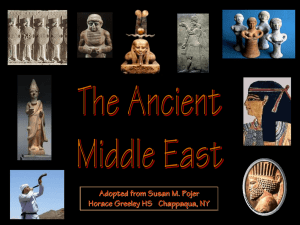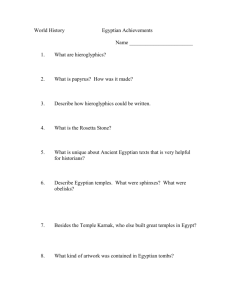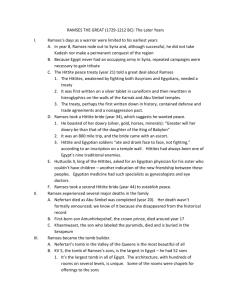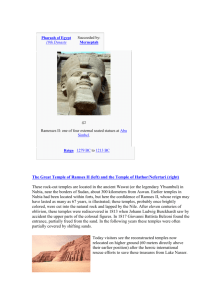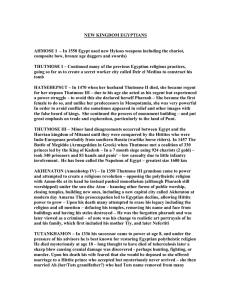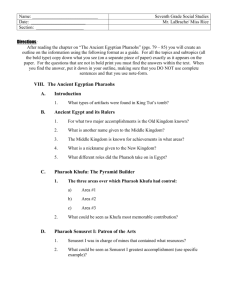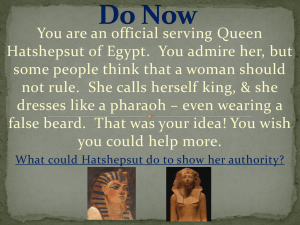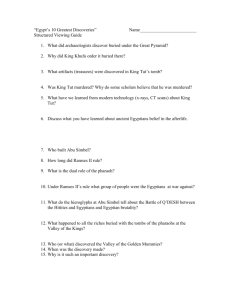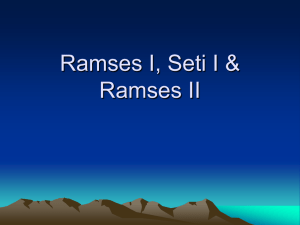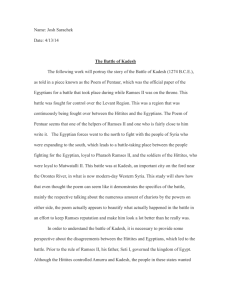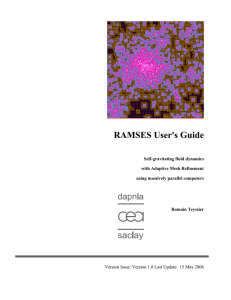Ramses Essay-610
advertisement
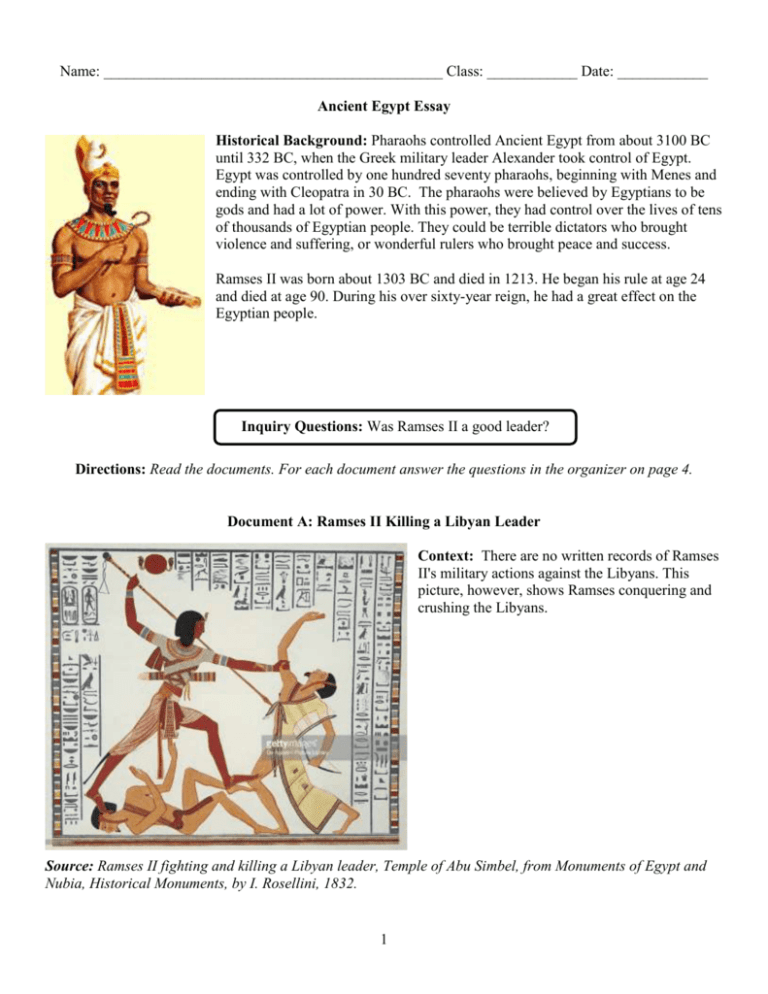
Name: _____________________________________________ Class: ____________ Date: ____________ Ancient Egypt Essay Historical Background: Pharaohs controlled Ancient Egypt from about 3100 BC until 332 BC, when the Greek military leader Alexander took control of Egypt. Egypt was controlled by one hundred seventy pharaohs, beginning with Menes and ending with Cleopatra in 30 BC. The pharaohs were believed by Egyptians to be gods and had a lot of power. With this power, they had control over the lives of tens of thousands of Egyptian people. They could be terrible dictators who brought violence and suffering, or wonderful rulers who brought peace and success. Ramses II was born about 1303 BC and died in 1213. He began his rule at age 24 and died at age 90. During his over sixty-year reign, he had a great effect on the Egyptian people. Inquiry Questions: Was Ramses II a good leader? Directions: Read the documents. For each document answer the questions in the organizer on page 4. Document A: Ramses II Killing a Libyan Leader Context: There are no written records of Ramses II's military actions against the Libyans. This picture, however, shows Ramses conquering and crushing the Libyans. Source: Ramses II fighting and killing a Libyan leader, Temple of Abu Simbel, from Monuments of Egypt and Nubia, Historical Monuments, by I. Rosellini, 1832. 1 Document B: Nefertiti’s Temple of Abu Simbel Context: The Temples at Abu Simbel are two massive rock temples. Ramses II had these temples carved out of a mountainside in 1264 BC as a monument to his wife Nefertiti and to celebrate his victory at the Battle of Kadesh. Source: Photograph from May 30, 2007 by Thant217. Document C: Egyptian-Hittite Peace Treaty Context: The Egyptian–Hittite peace treaty was made between Egyptian Pharaoh Ramses II and Hittite King Hattusili III. The treaty was signed to end a long war between the Hittite Empire and the Egyptians, who had fought for over two hundred years. The war ended with an Egyptian invasion in 1274 BC that was stopped by the Hittites at the city of Kadesh. The Battle of Kadesh resulted in both sides suffering many deaths and injuries, but neither side could be clearly called the winner. Source: The treaty is located at the Istanbul Archeological Museum. Photograph from 2008 by G. Dallorto. 2 Document D: The Poem of Pentaur Context: The Poem of Pentaur is the official Egyptian record of the Battle of Kadesh with the Hittites in 1274 BCE. Ramses had the poem praising him carved into the walls of five temples, including Karnak. Pentaur, a scribe who worked for Ramses, wrote it. Below is one of the verses from the poem. “Gracious lord and bravest king, savior-guard Of Egypt in the battle, be our protector; Behold we stand alone, in the harsh Hittite country, Save for us the breath of life, Save us from the trouble, Oh! Protect us Ramses! Oh! Save us, mighty king!” Source: Pen-ta-ur, quoted in The World’s Story, edited by Eva March Tappan Document E: Ramses II Context: This is a picture carved into a wall. In it, an enormous Ramses holds several prisoners by their hair. Source: 1290-1294 BCE, Egyptian Museum, Cairo; photograph, O. Louis Mazzatenta/National Geographic Image Collection 3 Use this page to organize your claims and evidence for each document. Doc What claim could be made about whether the Ramses II was a good leader? What evidence from the document did you use to make this claim? A B C D E 4
